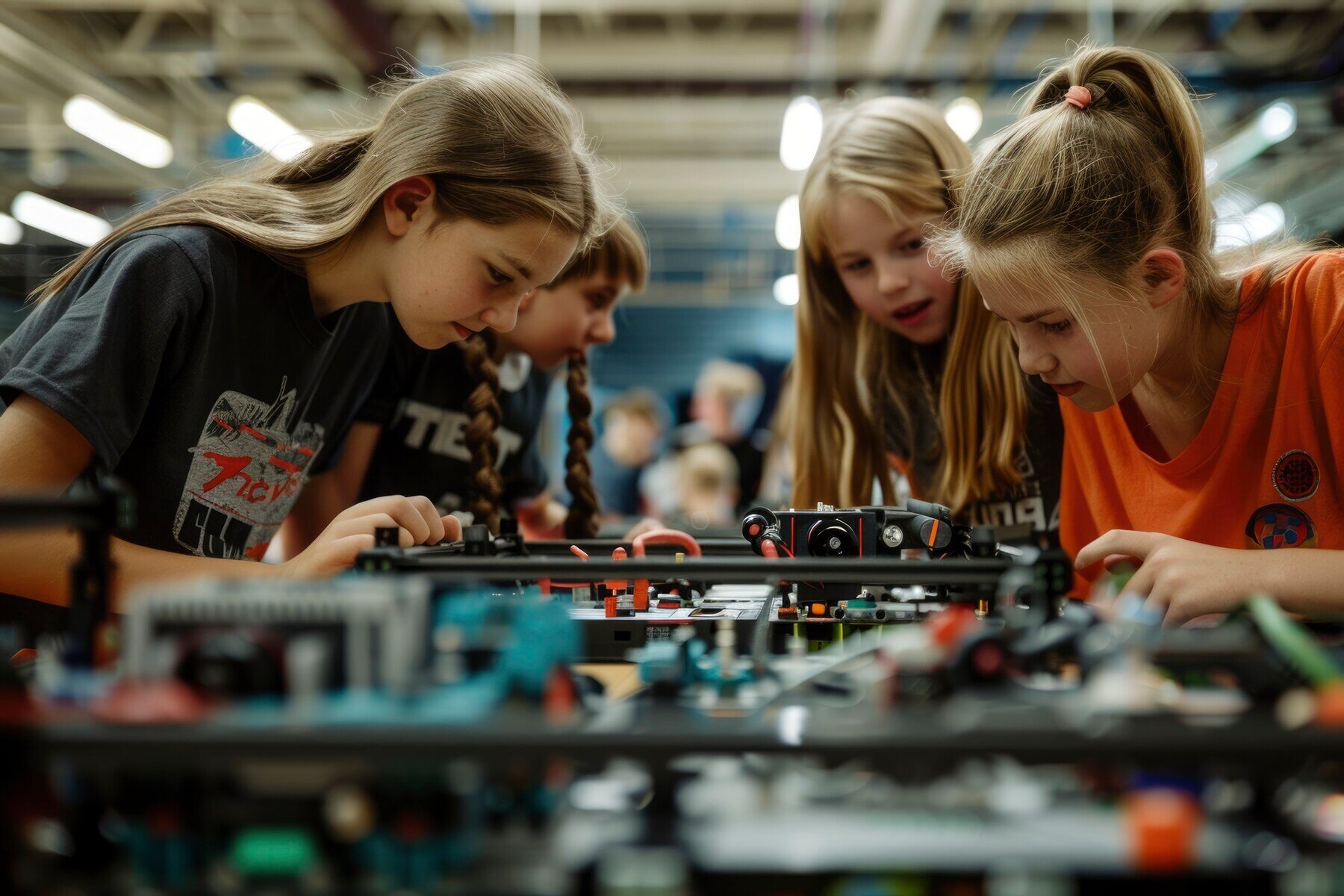Imagine having vast theoretical knowledge but feeling lost when facing real-world challenges. This disconnect between classroom learning and practical application leaves many unprepared for real-life situations. Traditional education often falls short, focusing more on theory than practice, causing frustration and inefficiency.
The solution lies in experiential learning, which bridges this gap by offering hands-on opportunities. By embracing real-world learning, educators and organisations can create transformative experiences that equip individuals with the skills and mindset needed to succeed in the real world.
The Importance of Real-World Learning
Traditional education systems often struggle to prepare students for the complexities of the real world. These systems tend to focus heavily on rote memorisation and standardised testing, limiting the development of critical thinking and creativity.
Real-world learning, however, emphasises practical application and problem-solving, essential skills for navigating real-life challenges.
Experiential learning benefits personal and professional development. It immerses learners in authentic situations and fosters critical thinking, creativity, and problem-solving skills. For instance, working on real projects, participating in internships, or engaging in community service provides invaluable experiences that traditional classroom settings often lack.
Moreover, real-world learning significantly enhances employability. Employers increasingly seek candidates who can demonstrate practical skills and real-world experience.
A recent Association of American Colleges and Universities report says that 93% of employers agree that a candidate’s ability to demonstrate skills that apply knowledge in real-world settings is more important than their academic credentials alone. By engaging in experiential learning, individuals can build portfolios that showcase their ability to tackle real-life challenges, making them more competitive in the job market.
Real-world learning addresses the shortcomings of traditional education by equipping students and learners with essential skills and experiences, enhancing their personal growth and career prospects. This approach ensures that learners are well-prepared to meet the demands of today’s dynamic work environment and can effectively contribute to their chosen fields.
Designing Effective Real-World Learning Experiences
Designing effective real-world learning experiences involves several key components that ensure learners are engaged and can apply their knowledge in practical situations.
Understanding Learning Theories
To design impactful real-world learning experiences, it’s crucial to understand relevant learning theories.
Constructivism, for example, suggests that learners build knowledge through experiences and reflections. Kolb’s experiential learning cycle involves four stages: concrete experience, reflective observation, abstract conceptualisation, and active experimentation.
Social learning theory emphasises the importance of observing, modelling, and imitating the behaviours, attitudes, and emotional reactions of others. It highlights that learning occurs in a social context and can happen purely through observation or direct instruction, even without direct reinforcement.
Applying these theories helps create learning experiences that are both engaging and effective. Educators can design activities that foster deeper understanding and retention by understanding how learners process and use information.
Identifying Learning Objectives and Outcomes
Clear learning goals and outcomes are essential. These should align with real-world challenges and opportunities. For instance, a course on environmental science could include objectives related to analysing local ecosystems or developing sustainability projects.
Educators and trainers can ensure that learning experiences are focused and relevant by setting specific, measurable outcomes. Clearly defined objectives guide the design of activities and assessments, ensuring that they meet educational and organisational goals and provide meaningful learning experiences.
(Source)
Creating Authentic Learning Environments
Authentic learning environments are essential to effective real-world learning. These environments should mirror real-world contexts and challenges. Examples include simulations, internships, and community projects.
For instance, a business student might benefit from a simulation of market dynamics, while a medical student could gain valuable experience through clinical internships. Authentic environments allow learners to apply their knowledge in practical settings, enhancing their skills and understanding.
Fostering Collaboration and Teamwork
Collaboration is essential in real-world problem-solving. Encouraging teamwork in learning experiences helps students develop interpersonal skills and learn from diverse perspectives. Strategies for building effective teams include assigning group projects, facilitating peer-to-peer learning, and creating opportunities for collaborative problem-solving.
Integrating Technology
Technology plays a significant role in enhancing real-world learning experiences. Virtual reality (VR), augmented reality (AR), and assistive technologies can simulate real-world scenarios, providing immersive learning experiences.
Online platforms and collaborative tools enable remote teamwork and global collaboration, expanding the scope of real-world learning. For example, medical students can use VR to practice surgeries in a risk-free environment, while business students can participate in international virtual teams.
Learning management systems are another vital technology tool for supporting real-world learning. The top LMS platforms offer robust features for organising and managing learning content, tracking student progress, and facilitating communication between instructors and students.
They also support integrating various multimedia resources and interactive elements, enhancing the learning experience. The most efficient LMS platforms, like Learn Amp, provide the infrastructure to effectively deliver comprehensive, real-world learning programs, ensuring students and learners can access resources and support anytime and anywhere.
Assessing Learning and Providing Feedback
Assessing real-world learning can be challenging, but it's essential for ensuring that learning objectives are met. Authentic assessment strategies include project-based assessments, reflective journals, and peer evaluations.
Providing timely and constructive feedback helps learners reflect on their experiences and identify areas for improvement. Continuous assessment and feedback ensure that learners stay on track and make the necessary adjustments to meet their learning goals.
Case Studies of Successful Real-World Learning Programs
Effective real-world learning programs exist in various fields, demonstrating the impact of experiential learning. Programs like project-based learning (PBL) have successfully engaged students with real-world problems. For example, a PBL initiative in a high school might involve students designing and implementing a community garden, applying concepts from biology, environmental science, and social studies.
In the business world, internship programs offer practical experience and professional development. Companies like Google and IBM have successful internship programs that provide real-world learning opportunities.
Google’s Internship Program
Google’s internship program is known for offering interns the chance to work on real projects that impact millions of users. Interns at Google are integrated into teams and given significant responsibilities. They participate in coding, product development, and research projects crucial to the company’s operations.
Interns receive mentorship from experienced professionals, attend technical and professional development workshops, and have the opportunity to network with other interns and Google employees. This experience helps them build technical skills, professional networks, and a deep understanding of how a major tech company operates.
IBM’s Internship Program
IBM’s internship program also emphasises real-world experience by assigning interns to projects that align with their skills and interests. Interns at IBM work on innovative projects such as developing AI solutions, enhancing cybersecurity, and creating new software applications. They receive mentorship and training that prepare them for future careers in technology.
Additionally, IBM’s program focuses on professional development through workshops, seminars, and networking events. Interns leave the program with practical experience, enhanced technical abilities, and a robust professional network.
Overcoming Challenges and Ensuring Impact
Implementing real-world learning can be challenging due to resource constraints and time limitations. However, these challenges can be overcome with strategic planning and innovation. One effective strategy is to form partnerships with industry, community organisations, and other educational institutions.
These partnerships can provide additional resources, expertise, and opportunities for students. For instance, businesses can offer internships, community organisations can facilitate service-learning projects, and other educational institutions can collaborate on joint programs.
Measuring and evaluating the impact of real-world learning programs is essential for continuous improvement. This involves collecting data on learner outcomes, such as skills gained and knowledge applied.
Feedback from participants is also crucial in understanding the strengths and weaknesses of the program. Analysing this data helps educators refine their approaches and make necessary adjustments.
Continuous improvement ensures that real-world learning programs remain relevant and effective, meeting the evolving needs of learners and the demands of the real world.
Conclusion
Real-world learning is essential for preparing individuals to succeed in today's complex and dynamic world. Educators and organisations can create transformative learning experiences that develop critical thinking, problem-solving, and practical skills by bridging the gap between theory and practice.
Implementing these principles requires understanding learning theories, setting clear objectives, creating authentic environments, fostering collaboration, integrating technology, and assessing outcomes. Encouraging readers to implement real-world learning principles can lead to more effective education and workforce development.
As we look to the future, embracing these approaches will ensure learners are well-equipped to navigate and thrive in the real world, driving innovation and progress across all sectors.



